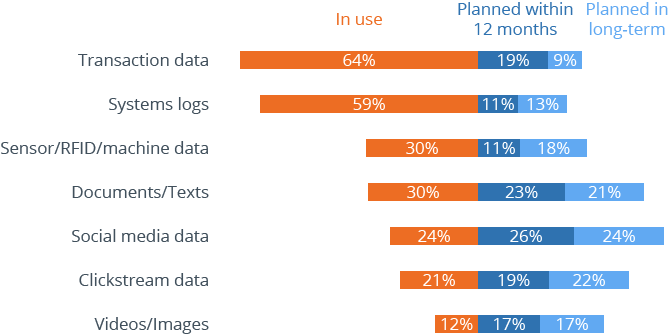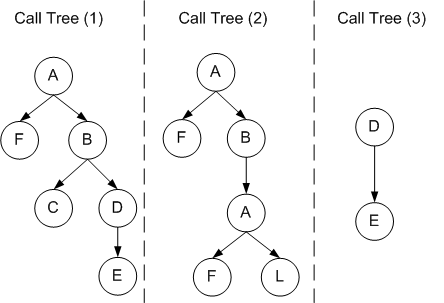Customer service and workplace-related mantras can be found everywhere. “The customer is always right” is perhaps the most popular. “Teamwork makes the dream work”, as coined by John Maxwell, is another.
You may ask, however, what actually fuels such mantras?
Perhaps the best fuel of all is data. In 2020, 1.7mb of data was being generated every second for every person, providing a leviathan of information on customer behavior that can help inform future business decisions.
As long as that data is used correctly, it can help transform your customer service. Below are just six potential benefits…
1. Provide a tailor-made service
Making recommendations based on the customer’s previous tendencies is a staple of any online browsing nowadays. You only need to look at video streaming websites such as YouTube and Netflix to see the way data is used to provide recommendations of new videos and shows to view. These data-driven algorithms can help viewers create and curate lists of what to watch next.
The use of RPA with machine learning can help tailor your service to customer needs in this manner. Short for Robotic Process Automation, RPA bots can perform automated tasks by following set conditions or rules. For example, they can help fill in forms or carry out calculations. With continued human input, RPA can be refined so as to perform these tasks in a more specific manner.
Using machine learning to support RPA bots opens up further possibilities. Instead of having a website that promotes content generating the most views or clicks, machine learning instead helps replicate more human characteristics. This could provide information on which users viewed the content that features certain keywords the most times, or for the longest duration of time. Exactly the kind of specific data that can upscale your customer service.

Image: bi-survey.com – Data Types Used for Big Data Analysis
2. Make your service more efficient
In some ways, this ties in with the above; some customers will prefer speedier transactions and interactions, while others will prefer a more guided process. On occasions, these preferences change in accordance with situational needs. Understanding how to cater to these different needs is key to customer retention.
A contact center helpdesk, for example, can utilize various call tree templates depending on the scenario customers find themselves in. This can help customers skip needlessly time-consuming automated guidance on how to reach certain branches of expertise within a business.
Data—most notably that generated through CRM systems—can help inform which call trees should be implemented in a particular contact center.

Image: researchgate.net/Anas Shatnawi
Do customers prefer to call a specific department and then be directed based on the subject they are calling in regards to? Would they prefer an overview? Would they prefer a tree that places an emphasis on their most frequent queries? Answering these questions could be key to your customer service success.
3. Help your employees help your customers
Given their position as the world’s leading data collector, it should be no surprise that Google leads the way in using data to improve their internal processes. Their People Analytics team conducted studies to find out what made a great manager and what made a great team. In the latter case, the following—in order of importance—were found to be most key:
- Psychological safety – Team members need to feel that their work can be conducted in an environment free of ignorance, negativity, and judgement.
- Dependability – Can team members depend on their colleagues to share workloads evenly and provide help when called upon?
- Structure and clarity – There should be no confusion, whether among a single individual or a collective, about the processes to be followed and responsibilities to be fulfilled in the workplace.
- Meaning – Understanding what provides team members a sense of purpose.
- Impact – Ensuring that team members derive a sense of satisfaction from a completed task.
Part of the basis for Google’s research was identifying factors that surfaced across a multitude of teams in different areas of the business, so it’s entirely possible one or more of their key factors applies to your staff.
However, you may have more specific or immediate business needs. Your employees may need to be aware of how best to promote a new service to your customers. For example, pointing customers in the direction of newly-created FAQ videos could be key to your ticket volume KPIs. Regardless, data-driven decisions can give greater control and clarity to customer service teams.
4. Eliminate flawed subjectivity
It’s fair to say that internal discussion can be healthy when making business decisions. Keeping up to date with the latest software testing news and expert insight can help inform the work that goes into your latest software update, and in turn, the guidance provided by your customer service team in relation.
However, what data can help eliminate is the dependency on a range of cognitive biases that inform our decision-making. Given the number of ways the human mind can be susceptible to these biases, the value of data-driven decisions is unquestionable.
Sometimes, even customers themselves don’t not necessarily know how to articulate what they want. Instead, studying their behaviors is more important than studying their feedback. After all, 73% of customers expect companies to understand their needs and expectations, but only 51% believe customers generally understand their needs and expectations, according to research by Salesforce.
While not all of the above discrepancy can be attributed to ineffective or misleading feedback, it nonetheless supports the idea that studying customer behavior can be more beneficial than customer satisfaction surveys (CSATs).

Image: Unsplash
5. Free-up resources
As mentioned previously, call trees can help contact centers provide a more efficient service. Powered by IVR (interactive voice response) technology, it is entirely possible for some queries to be handled without a live agent ever having to speak to the customer. A similar story applies to online chatbots.
This could, for example, allow agents the opportunity to focus on other tasks such as training or software testing. The increased focus on other needs can lead to further customer satisfaction, effectively creating a cycle of benefits to a business. The same applies to high-street outlets that do not necessarily need to have staff on hand constantly if their online channels are easily accessible and equally useful.
Best of all, these practices are not restricted to large-scale businesses. It is perfectly viable to implement call centers for small business courtesy of VoIP (Voice over internet Protocol) solutions, and there are a wide range of benefits for businesses of all sizes.
6. Eliminate obstacles
Effectively part of the cycle of benefits mentioned earlier—and also a natural consequence of understanding customer needs—data can help eliminate potential obstacles that can arise when releasing new product lines or new software updates.
Using data to get an understanding of your company’s distribution capabilities could help your business avoid supply issues. For example, Sony’s Playstation 5 launch was hindered by supply problems that were further exacerbated by the global shortage of semiconductors.
While Sony isn’t exactly short of data, if it can help improve your understanding of customer demand in relation to the capability of your supply chains—why wouldn’t you use it?
In conclusion
Ultimately, making data-driven decisions is key to upscaling your customer service by helping you understand your customers.
From there, a cycle of possibilities opens up—you can improve internal processes, provide your support teams with greater resources, and eliminate cognitive biases in decision making. While those internal changes may not directly impact your customers, they will be the real beneficiaries—and when they win, so does your business.



